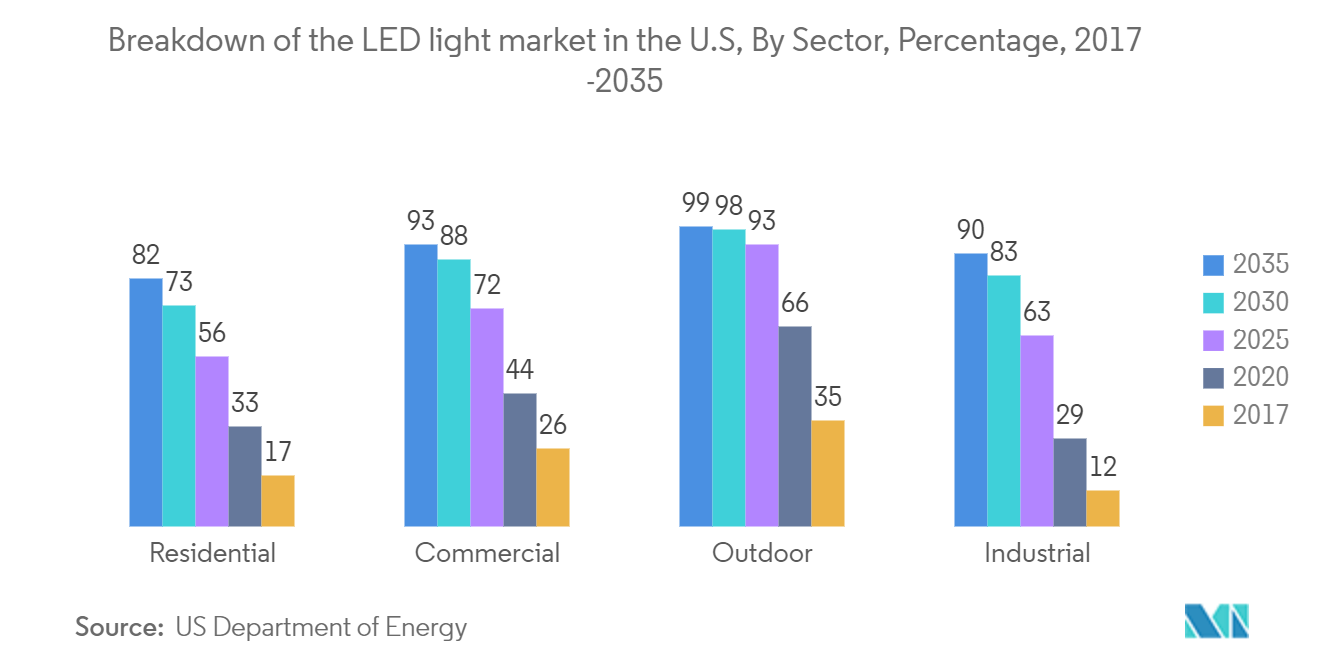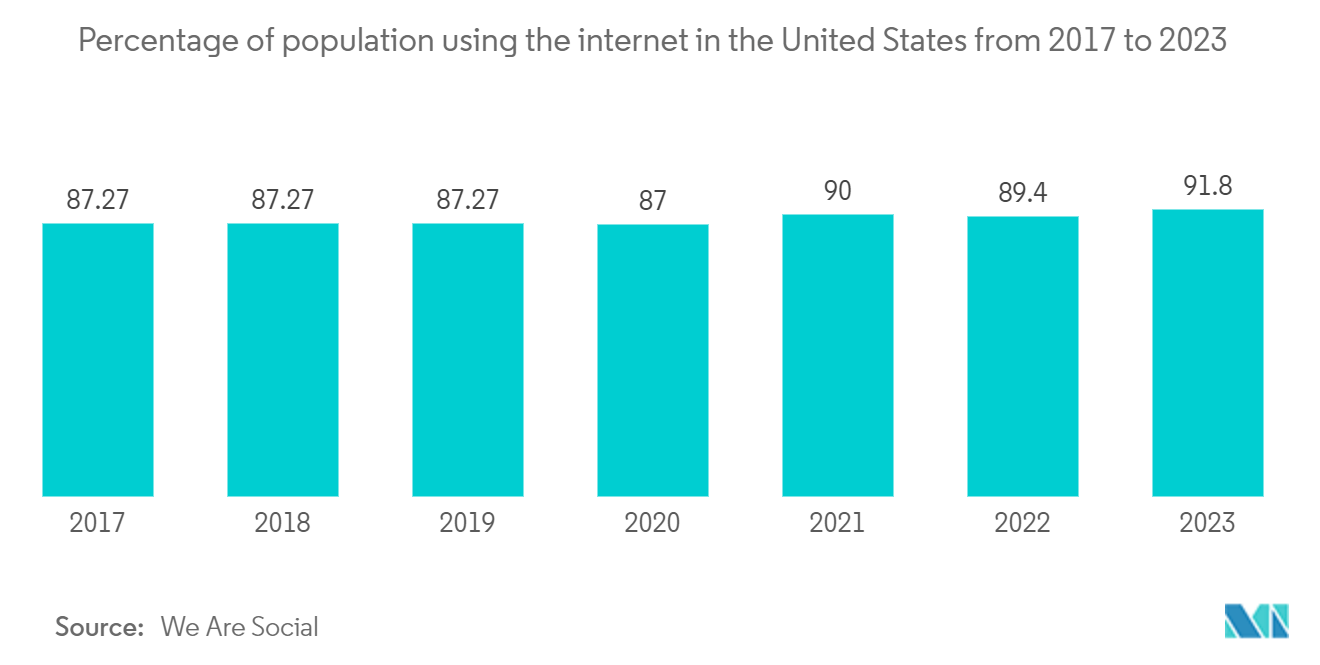Market Trends of USA Li-Fi Industry
LED Segment is Expected to Register a Significant Growth Rate
- Smart buildings have begun adapting to accommodate their residents to improve the resident's comfort and user experience by knowing the locations of each occupant and then providing location-based services, such as logistics, intelligent car parking, health monitoring, and shopping assistance. In addition to indoor shopping assistance, location-based services are also playing a crucial role in the reduction of building energy costs. The primary idea of Li-Fi technology is to utilize the visible light from an LED light bulb to transmit high-speed data to a photodetector, which is connected to a smartphone or tablet.
- The rising growth in the usage of LED lamps in buildings for lighting also provides enormous opportunities for Li-Fi-based applications. As Li-Fi primarily combines the functions of high-speed wireless data communication and indoor lighting infrastructure, it is very cost-effective to be utilized in smart buildings. As long as they are in close proximity to a nearby LED lamp, smart building residents can easily get access to internet service without extra hardware costs (such as a Wi-Fi router or cables). When smart building residents walk inside a smart building, the indoor LED lighting will offer free wireless internet connection service.
- High illumination, long life, and low power consumption have led to the implementation of LED as a primary component in Li-Fi systems across the United States. The government's promotions for smart LED bulbs in the United States are expected to provide a massive infrastructure base for Visible Light Communication (VLC) system providers.
- Moreover, the growth and increase in the lifetime of LED lighting have led to the formation of new commercial prototypes in the lighting industry. In Li-Fi technology, visible light coming from LED bulbs acts as a carrier for data and can reach any devices that are illuminated by it. The flickering of the LED bulb creates a signal for the receiver device, thereby transmitting data. This wireless optical networking technology has the potential to transmit data up to a speed of 224 GB per second and is about 100 times faster than Wi-Fi.
- As per the US Department of Energy, LED lights are forecast to be gaining popularity at a drastic rate between 2020 and 2035 in the United States. By 2025, LED lights should be installed in 73% of residential lighting and become the most common light source in all sectors. This will create enormous growth opportunities for the market to grow and enhance throughout the forecast period, which in turn will drive the market significantly.

Rise in the internet usage and increasing applications of indoor location-based services in the United States is Expected to Drive the Market Growth
- The utilization of Li-Fi in marine and subsea applications is also manifold. For instance, the US Navy presently uses a slow and antiquated system for underwater communication that does not quite jibe well with the poor acoustics that lie underwater. As a result, the US Navy is developing advanced communication technology using Li-Fi to counter the problem of subsea communication. Further, for use in petrochemical plants or on airplanes, Li-Fi emissions are considered to be a great solution since Wi-Fi tends to interfere with onboard electronics.
- The future applications that the US government has in mind for Li-Fi could serve a much bigger purpose than just for underwater, airplane, and chemical plant usage. Presently, the Federal Communications Commission has explained cautions of crowding in wireless communications since the radio frequency spectrum is beginning to get full.
- Also, the increasing applications of indoor location-based services embedded with light fixtures in retail shops and hotels in the region are anticipated to be one of the vital factors driving the growth of the market in the region. Various companies, such as GE Lightings and ByteLight Inc., have been deploying VLC installations in supermarkets, which, in turn, is helping retailers to tie customers' shopping history by tracking their location details.
- As Internet connectivity is becoming a necessity in this century and people are looking for hassle-free, fast internet, the spread of Li-Fi in the United States is expected to grow steadily throughout the forecast period. The rapid advancements in information technology, such as wireless sensor networks, the Internet of Things (IoT), Big Data, and smartphones, have significantly resulted in the development of smart buildings in the region. The penetration of smart homes in the region is further expected to rise owing to the advancement in multiple technologies, thereby offering several opportunities for Li-Fi in the region.
- As per We Are Social, as of 2023, approximately 92 % of individuals in the United States accessed the internet, up from nearly 87% in 2012. The United States was one of the largest online markets worldwide, and in 2022, with an overall count of around 299 million internet users in the United States. With this significant rise in the overall count of internet users in the United States, the demand for Li-Fi systems will rise considerably within the region, driving the market exponentially.


